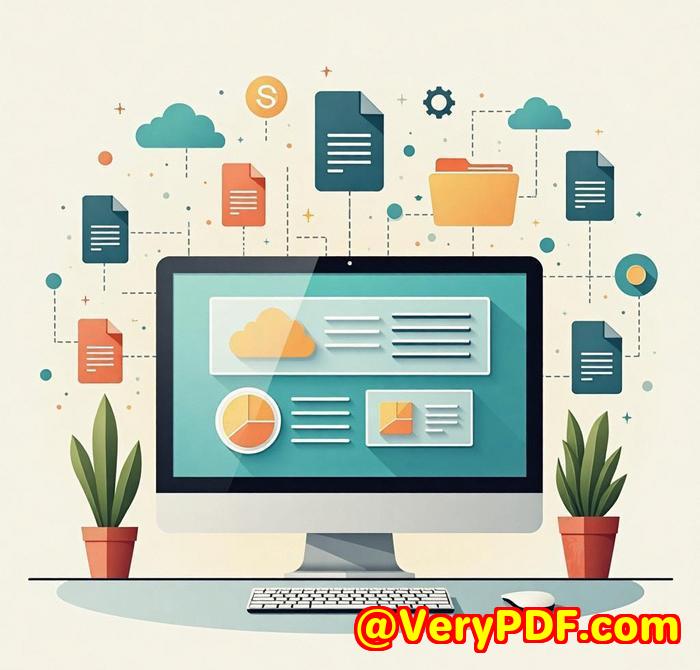Extract Important Tables from Academic Journals with High Precision Using VeryPDF OCR to Any Converter
Meta Description:
Effortlessly extract structured tables from academic journals with VeryPDF OCR to Any Converter Command Lineperfect for research and data analysis.

Every researcher has faced this: a goldmine of academic insight trapped inside scanned journal articles, formatted in dense tables that you can't copy, search, or reuse. During my thesis work, I spent days manually retyping table data from PDFsrows of statistical values, bibliographic metadata, and research results. It wasn't just time-consuming, it was soul-draining. That's when I stumbled across VeryPDF OCR to Any Converter Command Line, and everything changed.
I first came across the tool while searching for an OCR solution that didn't just recognize text, but actually understood layout and structureespecially tables. VeryPDF's solution immediately stood out because it wasn't a clunky GUI; it was a command line utility designed for batch processing. As someone comfortable with scripting, this was perfect. I could automate entire workflows and feed in hundreds of scanned articles at once.
What impressed me first was the tool's advanced Table Recovery Engine. Unlike many OCR tools that flatten tables into plain text, VeryPDF OCR to Any Converter identifies bordered and even borderless tables and reconstructs them into formats like Excel, CSV, and HTML with proper rows and columns. I tested it on a scanned ecology journalpacked with complex matrices and nested headersand it got the structure right on the first try using the -ocr2 and -ocr2excelmode flags. It wasn't just about getting the textit got the relationships between cells right.
Another standout feature is the Enhanced OCR Technology, which goes beyond basic character recognition. Using the -ocr2 flag activates a more precise OCR engine that improves accuracy dramatically. This was especially noticeable in small-font footnotes and numerical values in dense tablesno more misreading "8" as "B" or "1" as "l." It supports multiple languages too, which helped me process papers in both English and German with the -lang parameter.
A particularly useful command in my workflow was -layout2, which aligns columns during PDF to table conversion, preserving the spatial layout of the original document. This made sure tables weren't just readablethey were cleanly formatted and ready for analysis in Excel without any post-cleanup.
Most importantly, this tool works entirely offline and doesn't require Microsoft Office to create DOC, RTF, or Excel filesideal for secure or restricted environments like libraries or research labs. I compared it with a few cloud-based OCR tools, and while some were decent at text extraction, none of them came close when it came to table precision, layout preservation, or batch processing speed.
In short, VeryPDF OCR to Any Converter Command Line has saved me days, if not weeks, of work. I can now run a single script to convert entire folders of scanned PDFs into structured, searchable, and editable formats. Whether it's extracting medical tables for a meta-analysis or pulling economic datasets from old journals, this tool just worksand it works well.
If you frequently deal with scanned academic PDFsespecially ones rich in data tablesthis tool will become indispensable. I'd highly recommend it to researchers, librarians, data analysts, and anyone else who works with structured information trapped in static files.
Click here to try it out for yourself:
https://www.verypdf.com/app/ocr-to-any-converter-cmd/
Start your free trial now and boost your research productivity.
Custom Development Services by VeryPDF
Need a tailor-made document solution? VeryPDF offers custom development services for document processing, printing, conversion, and OCR across platforms including Windows, Linux, macOS, iOS, and Android. Whether it's building PDF tools in C++, integrating OCR modules in Python, or creating virtual printer drivers that capture jobs in PDF, TIFF, or Postscript, VeryPDF has you covered.
They also provide system-level monitoring, API hooking, barcode recognition, and layout analysis technologies. From scanned document table recognition to secure document management and cloud-based digital signature solutions, their services support industries from publishing to legal to government. Explore more or request your own solution via their support center: http://support.verypdf.com/
FAQ
1. Can VeryPDF OCR to Any Converter extract tables from low-resolution scans?
Yes, thanks to built-in deskewing, despeckling, and resolution enhancement options like -res, -imageopt, and -ocr2, it performs well even on poor-quality scans.
2. Does it work with multi-page TIFF files?
Absolutely. The tool supports single and multi-page TIFFs, along with JPEG, PNG, and PDF inputs for batch OCR processing.
3. How do I extract tables into Excel format?
Use the -ocr2 and -ocr2excelmode options to convert scanned documents directly into structured Excel sheets. You can choose between combined sheets or page-by-page output.
4. Is the software scriptable for automation?
Yes, it's designed as a command line utility. You can integrate it into batch scripts or automated pipelines easily.
5. What makes this better than free OCR tools?
Precision. Most free tools fail when it comes to recognizing complex tables or preserving layout. VeryPDF excels in structure recovery, multilingual OCR, and batch performance.
Tags / Keywords
OCR academic tables, batch table extraction, scanned journal OCR, convert PDF to Excel, VeryPDF OCR to Any Converter, table recovery OCR, academic research OCR, scanned tables to CSV, command line OCR tool, OCR for researchers.